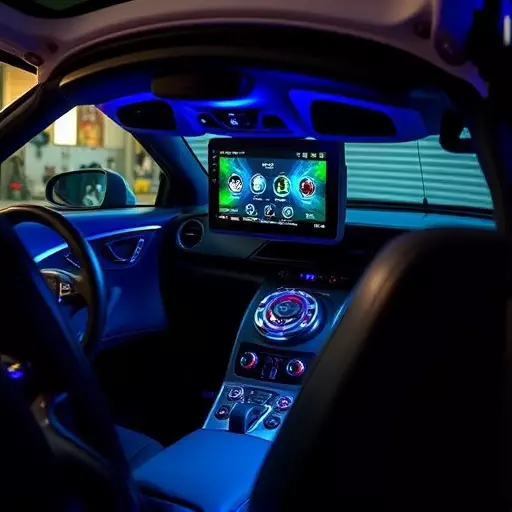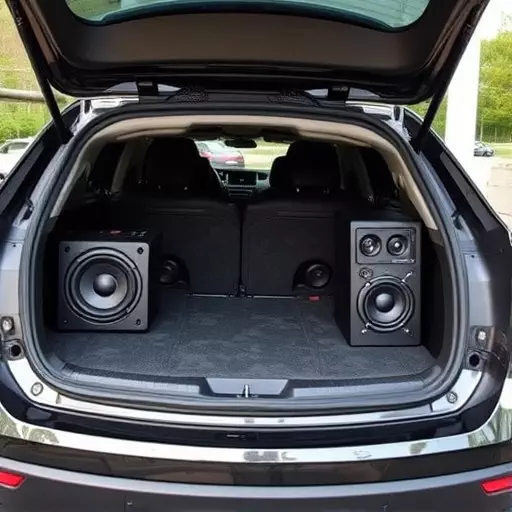Proper audio calibration is crucial after any car audio installation in Toledo, whether DIY or professional. It ensures your stereo system delivers optimal sound quality by balancing highs, mids, and basses for an immersive experience. Essential tools include a measurement microphone, oscilloscope, and signal generators to adjust frequency responses precisely. For best results, carefully position speakers and use calibration software; professionals offer expert insights into room acoustics for superior sound tailored to your vehicle.
After installing a new car audio system in Toledo, ensuring optimal sound quality through calibration is crucial. This process fine-tunes your system for precise and immersive audio performance. Whether you opt for a DIY approach or seek professional assistance, understanding audio calibration is key to unlocking the full potential of your car audio installation in Toledo. Learn about the equipment needed, step-by-step guides, best practices, and when to call in experts for the ultimate listening experience.
- Understanding Audio Calibration: Why It's Essential After Installation
- Equipment Required for Car Audio Calibration
- Step-by-Step Guide to DIY Car Audio Calibration
- Professional Car Audio Installation: When to Seek Expert Help
- Optimizing Sound Quality: Tips and Best Practices
Understanding Audio Calibration: Why It's Essential After Installation

After completing a car audio installation toledo, whether it’s a diy car audio installation or a professional car audio installation, proper audio calibration is crucial. It ensures that your system produces the best possible sound quality tailored to your vehicle’s acoustic environment. Think of it as fine-tuning your stereo system to perfect harmony within your car’s unique space.
Audio calibration goes beyond simply adjusting volume levels. It involves precise adjustments to frequency response, equalization, and time alignment to create a balanced and immersive soundscape. This is especially important in vehicles with varying interior sound absorption and reflection characteristics. Getting these settings right means enjoying crisp highs, powerful mids, and deep basses that harmonize with your driving experience, whether you’re streaming music or enjoying high-fidelity audio content.
Equipment Required for Car Audio Calibration

To ensure optimal sound quality after a car audio installation in Toledo, whether it’s a DIY project or a professional setup, several pieces of equipment are essential for calibration. The process often requires tools like a measurement microphone, an oscilloscope, and signal generators to accurately adjust various audio parameters. These tools help fine-tune the system by measuring and adjusting frequency responses, ensuring every sound is heard as intended.
For car audio installation in Toledo, whether handled by enthusiasts or professionals, the right equipment makes calibration efficient. A measurement microphone captures precise sound data across frequencies, guiding adjustments on the amp and speakers. The oscilloscope visualizes waveforms, aiding in time alignment and phase correction for a balanced listening experience. Together, these tools empower users to transform their car audio from a raw installation to a symphony of perfectly harmonized sounds, catering to both DIY enthusiasts and those seeking professional-grade results.
Step-by-Step Guide to DIY Car Audio Calibration

DIY Car Audio Calibration: A Step-by-Step Guide
After completing your car audio installation Toledo or any DIY setup, achieving optimal sound quality through diy car audio installation is crucial. Calibration ensures that every speaker in your vehicle emits a consistent, high-fidelity sound. Start by ensuring all components are connected securely and powered on. Use your car’s infotainment system to access the calibration menu. Next, play a test tone or use a dedicated calibration CD/track. Adjust each speaker’s gain, bass, treble, and balance settings until the sound is even across the vehicle.
Pay close attention to the subwoofer settings; its frequency should match the amplifier’s output for best performance. You may need to move speakers or adjust positioning for precise results. Professional car audio installation experts recommend using a measurement microphone for accurate tuning. However, for DIY enthusiasts, visual inspection and listening tests are adequate for achieving a balanced, immersive soundstage.
Professional Car Audio Installation: When to Seek Expert Help

Many DIY enthusiasts take pride in installing their own car audio systems, and for simpler setups, it can be a rewarding project. However, when it comes to more complex sound systems, particularly high-end configurations, professional car audio installation in Toledo is often the best course of action. Expert installers possess the knowledge and tools to ensure precise placement and optimal calibration of each component. They understand how to manage wire routing for neatness and accessibility while ensuring every connection is secure.
Professional installers also have access to a wider range of high-quality components, including amplifiers, processors, and speakers, which can significantly enhance the overall audio experience. Moreover, they can provide valuable insights into room acoustics, speaker placement, and equalization settings, tailored to your vehicle’s unique interior dynamics. This level of expertise ensures that your car audio installation in Toledo not only looks clean and professional but also sounds remarkable, transforming your commute into a symphony of immersive sound.
Optimizing Sound Quality: Tips and Best Practices

To truly optimize sound quality after a car audio installation in Toledo, whether it’s a DIY project or handled by professionals, consider these valuable tips and best practices. Start by ensuring proper placement of speakers; this can significantly impact the clarity and projection of sound. Each speaker should be positioned strategically within the vehicle’s cabin to create an even soundstage, avoiding any direct alignment with windows or hard surfaces that could cause distortion.
Additionally, balancing the crossover settings is crucial. Adjusting these settings allows for precise control over frequency response, ensuring each driver reproduces its intended range accurately. Utilize a measurement microphone and calibration software to fine-tune these settings for optimal performance. Remember, professional car audio installation services in Toledo often employ such tools to deliver superior sound quality tailored to your vehicle’s unique acoustic environment.


